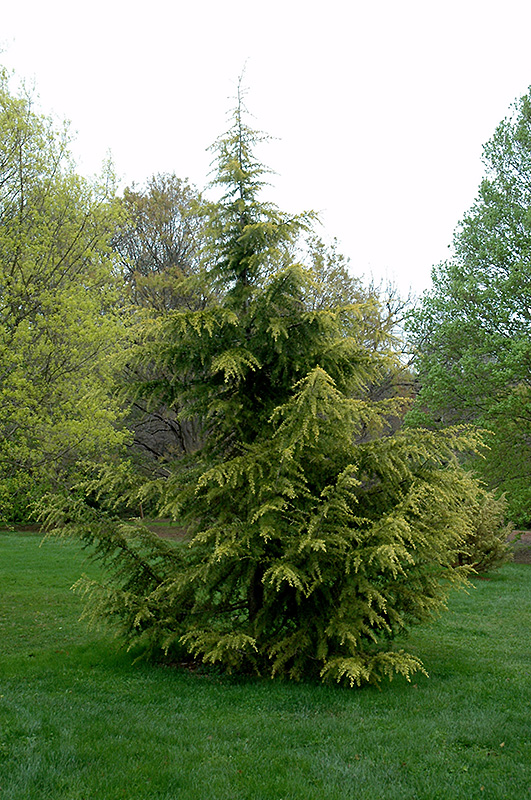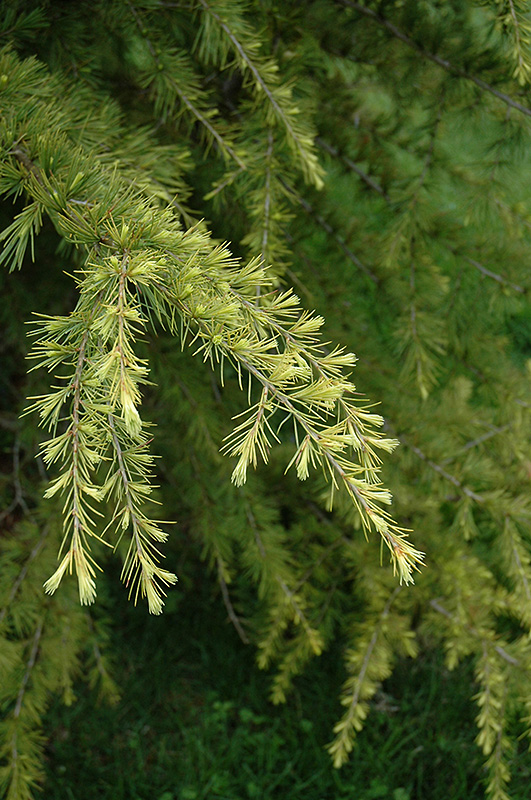>> Home
Gold Cone Deodar Cedar
Cedrus deodara 'Gold Cone'
Height: 25 feet
Spread: 10 feet
Sunlight:
![]()
Hardiness Zone: 4
Other Names: Himalayan Cedar
Description:
A striking medium sized tree with a narrow, pyramidal habit of growth; graceful horizontal branches bear golden-green needles; best used as a colorful landscape accent; rich golden color year round for added winter interest
Ornamental Features
Gold Cone Deodar Cedar is primarily valued in the landscape for its distinctively pyramidal habit of growth. It has attractive gold-variegated green foliage which emerges buttery yellow in spring. The needles are highly ornamental and remain green throughout the winter.
Landscape Attributes
Gold Cone Deodar Cedar is an evergreen tree with a strong central leader and a distinctive and refined pyramidal form. Its relatively fine texture sets it apart from other landscape plants with less refined foliage.
This is a relatively low maintenance tree, and usually looks its best without pruning, although it will tolerate pruning. It has no significant negative characteristics.
Gold Cone Deodar Cedar is recommended for the following landscape applications;
- Accent
- Vertical Accent
Planting & Growing
Gold Cone Deodar Cedar will grow to be about 25 feet tall at maturity, with a spread of 10 feet. It has a low canopy with a typical clearance of 5 feet from the ground, and should not be planted underneath power lines. It grows at a medium rate, and under ideal conditions can be expected to live for 80 years or more.
This tree should only be grown in full sunlight. It is very adaptable to both dry and moist growing conditions, but will not tolerate any standing water. It may require supplemental watering during periods of drought or extended heat. It is not particular as to soil type or pH. It is somewhat tolerant of urban pollution, and will benefit from being planted in a relatively sheltered location. This is a selected variety of a species not originally from North America.

